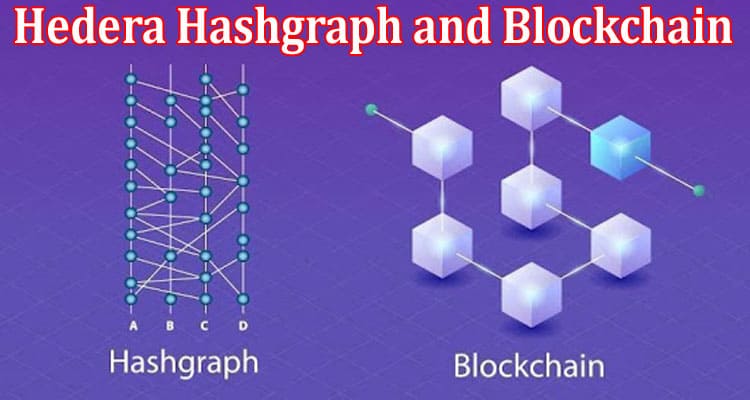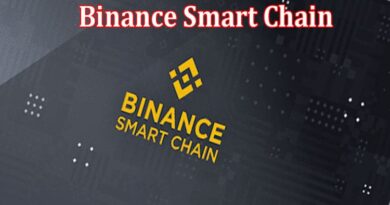Difference Between Hedera Hashgraph and Blockchain
Blockchain and Hedera Hashgraph would look like similar technologies to people around, but are really are they same? Both of them are Distributed Ledger Technologies and talk about decentralization, so here in this article we will discuss upon them and try to understand the differences between both technologies.
What is Hedera Hashgraph?
Hashgraph is a Distributed Ledger Technology (DLT) that is capable of securing the platform against attacks, while security, fair conditions, and a high level of performance are some of its main features of it. The functioning of Hedera Hashgraph through Directed Acyclic Graph (DAG) for its architecture, where all the nodes communicate their information to each other, and their communication is reported by building a graph of connections. Further, all those information or data is stored in events.
Hyperledger is hosted by Linux Foundation as an international alliance comprising global leaders from a wide range of sectors like banking, finance, the Web of Things, supply chains, and production. Hyperledger doesn’t encourage any sort of cryptocurrency and due to that it has no native token.
Hedera Hashgraph is an enterprise-focused DLT solution had been widely used and deployed by various firms worldwide and there had been a great deal of confusion over how and in what way a Hedera developer must obtain its full potential.
What is Blockchain and how does it work?
Well, if we describe theoretically the definition of what blockchain is? Then, the answer would be, Blockchain is a growing list of records, called blocks that are linked using cryptography. While each block refers to the previous block and together makes the Blockchain. Blockchain is not just a technology, but an emerging technology that would be the next generation of the Internet that has varied applications in day to life.
Blockchain with its decentralized and trust-less features can open up new opportunities and benefits for many enterprises. Verification of a transaction in a public network is not safe currently, so here Blockchain brings private and permissioned networks to suit enterprises. Now take an instance of a transfer of shares of ownership in the current scenario that requires much paperwork, a trusted entity to look over, or a legal advisor. Overall, blockchain plays an important role by providing a trust-less secure environment that removes the need for having a third party and this can be even over a public network.
Differences between Blockchain vs Hedera Hashgraph
Open-source vs Patented product
Individuals can donate to the open-source blockchain innovation by adopting it and using it to create tools like currency and utility coins. Owing to their decentralised nature after determining their value, blockchains have effectively established their footprint around various businesses. As a newbie member, you must go through Swirlds because Hedera Hashgraph is a copyrighted technology controlled by Swirlds.
Transactional speed
The adoption of systems like Hyperledger, or products like cryptocurrencies, blockchain systems like Ethereum, Corda, and others affects how quickly blockchain technology advances.
Hedera employs the chatter about chatter approach to provide better transaction rates because it propagates less data while allowing for more simultaneous events. Actually, Hedera Hashgraph, which could also execute up to 500,000 operations per second, outperforms Blockchain by a wide margin.
Efficiency
The Blockchain employs a block method, that renders it difficult for multiple miners to engage on it concurrently. Furthermore, this reduces the effectiveness of blockchains because the other blocks that are getting processed are discarded, wasting time and energy.
Hedera is far more effective in this regard because no resources are lost or spent. The talk about the conversation method gives the network exclusive rights to all events, making it 100% effective.
Consensus reaching mechanism
Blockchain’s agreement approach is heavily reliant on both currency and encryption. Hedera makes use of a virtual voting system to get the same agreement.
This approach eliminates the requirement for a second, independent algorithm because it operates efficiently and consistently delivers great efficiency. Because it requires little computational capacity, this consensus technique consumes substantially less energy, which lowers operational expenses.
Conclusion
Hedera Hashgraph might have a lot of advantages compared to Blockchain initially, but what needs not be forgotten is that the full potential of Hedera Hashgraph is still not tested. Theoretically, Hedera is said based on a decentralized architecture, but the outer government still controls its pace. Even the history of transactions is limited to a short number in Hedera Hashgraph, as in case the record is long, it can’t track it!
Now compared to Hedera, Blockchain has already proven its worth in its potential and comes with various features from which many sectors had already reaped many benefits. A senior blockchain developer at Rejolut says that Blockchain is a versatile technology that has diverse use cases, whereas Hedera is a solution focused purely on enterprises.




